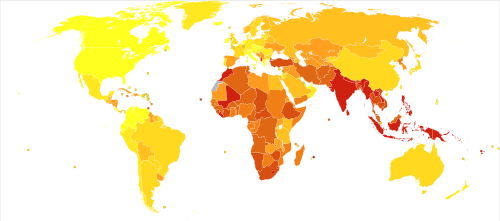Asthma
Asthma is a long-term inflammatory disease of the airways, characterized by variable and recurring symptoms, reversible airflow obstruction, and bronchospasms. Symptoms include episodes of wheezing, coughing, chest tightness, and shortness of breath. These symptoms can occur daily or weekly and may worsen at night or during exercise.

Causes and Risk Factors
Asthma is caused by a combination of genetic and environmental factors. Environmental triggers include air pollution, allergens, medications such as aspirin and beta-blockers, and occupational exposures to chemicals and dust. Smoking during pregnancy and exposure to smoke can also increase the risk. Genetic predisposition plays a significant role, especially in cases where asthma develops before the age of 12.
Signs and Symptoms
Asthma is marked by recurrent episodes of wheezing, shortness of breath, chest tightness, and coughing. Symptoms are typically worse at night, in the early morning, or in response to exercise or cold air. Associated conditions include gastroesophageal reflux disease (GERD), rhinosinusitis, and obstructive sleep apnea. Psychological disorders such as anxiety and depression are more common in asthmatics.
Pathophysiology
Asthma results from chronic inflammation of the airways, leading to increased contractility of the surrounding smooth muscles. This inflammation causes narrowing of the airways, resulting in the classic symptoms of wheezing and shortness of breath. The inflammation involves various immune cells, including eosinophils, T lymphocytes, and macrophages.



Diagnosis
Asthma diagnosis is based on the pattern of symptoms, response to therapy, and spirometry testing. Spirometry is the best diagnostic test, showing reversible airflow obstruction. Improvement in FEV1 by more than 12% and 200 millilitres following bronchodilator use supports the diagnosis. Other diagnostic methods include the methacholine challenge and peak expiratory flow testing.
Treatment
Asthma management focuses on avoiding triggers and using medications. Inhaled corticosteroids are the mainstay for long-term control. Long-acting beta agonists (LABAs) or antileukotriene agents are added if symptoms are not controlled. Short-acting beta2 agonists (e.g., salbutamol) are used for quick relief. Severe cases may require oral corticosteroids, magnesium sulphate, and hospitalization.


Prognosis
The prognosis for asthma is generally good with proper management. Mortality has decreased due to better recognition and treatment. However, severe asthma can lead to complications such as chronic obstructive pulmonary disease (COPD). Asthma affects millions globally, with higher prevalence in developed countries and among economically disadvantaged groups in developed nations.



Historical Perspective
Asthma has been recognized since ancient Egypt and was officially named by Hippocrates. Treatments have evolved from herbal remedies to modern pharmacological approaches. Notable historical treatments include the use of epinephrine in the early 20th century and the development of inhaled corticosteroids and beta agonists in the 1960s.



Self-assessment MCQs (single best answer)
Which of the following is NOT a common symptom of asthma?
Which environmental factor is commonly associated with the development and exacerbation of asthma?
What is the first-line treatment for an acute asthma attack?
What is the primary diagnostic test used to confirm asthma?
Which condition is commonly associated with asthma?
Which medication is used for long-term control of asthma?
What is the main goal of asthma management?
Which type of asthma is triggered by allergens?
Which of the following is a common trigger for asthma exacerbation in children?
What is the role of leukotriene receptor antagonists in asthma management?
Dentaljuce
Dentaljuce provides Enhanced Continuing Professional Development (CPD) with GDC-approved Certificates for dental professionals worldwide.
Founded in 2009 by the award-winning Masters team from the School of Dentistry at the University of Birmingham, Dentaljuce has established itself as the leading platform for online CPD.
With over 100 high-quality online courses available for a single annual membership fee, Dentaljuce offers comprehensive e-learning designed for busy dental professionals.
The courses cover a complete range of topics, from clinical skills to patient communication, and are suitable for dentists, nurses, hygienists, therapists, students, and practice managers.
Dentaljuce features Dr. Aiden, a dentally trained AI-powered personal tutor available 24/7 to assist with queries and provide guidance through complex topics, enhancing the learning experience.
Check out our range of courses, or sign up now!


